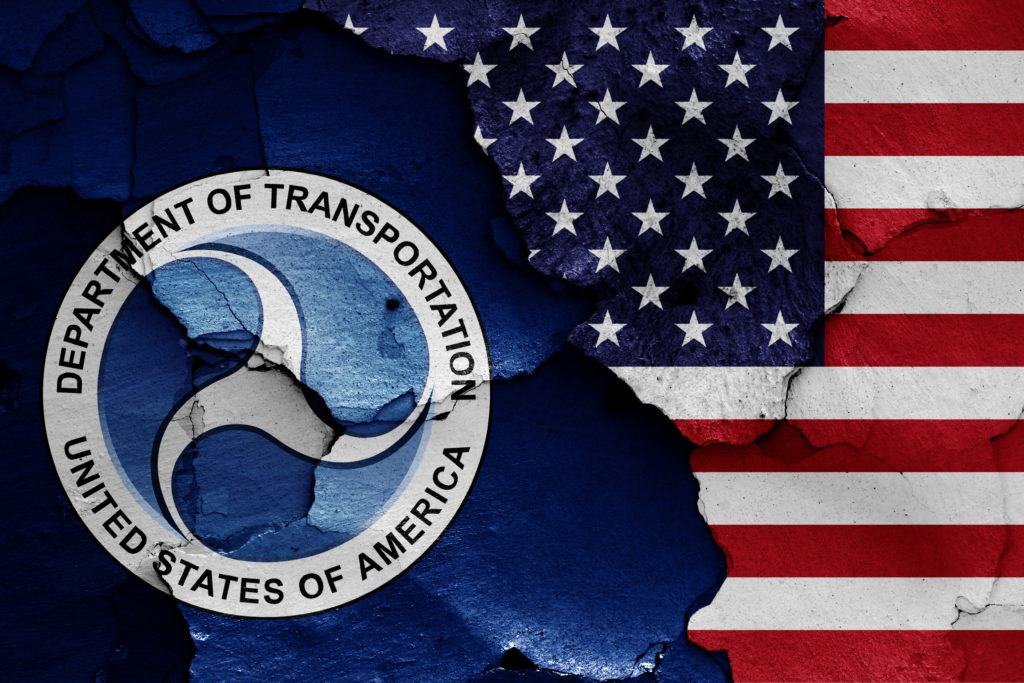
The comprehensive National Freight Strategic Plan was released by the U.S. Department of Transportation earlier this month, a plan which will aim to give clear guidance regarding how to create safety and resilience improvements within the country’s freight system.
“Every day, America’s transportation network moves more than 51 million tons of freight and energy products valued at nearly $52 billion via highways, railways, ports, and inland waterways, pipelines, and airports,” said the DOT in a statement. “The growth in freight demand due to increasing use of e-commerce and local supply chains in recent years has strained our freight system, and could threaten the competitive advantage of American businesses.”
This plan, deemed necessary by the Fixing America’s Surface Transportation Act, will work to guide infrastructure planning and freight movement efficiency improvements. It will also boost freight system safety, infrastructure developments, and data and technology capability support.
Transportation Secretary Elaine Chao explained that freight system investment will help the country’s competitive strength in agriculture and manufacturing industries, and that economic competitiveness boosts will align with a strong infrastructure network.
“This system helps drive economic growth and touches the lives of every American,” she said. “This plan establishes a clear vision for the future of our nation’s transportation system.”
The plan addresses current areas for improvement and opportunity in relation to overall freight movement, including the challenge of e-commerce, which has brought upticks in truck traffic and curb space jams. For shipments moving 750 miles or fewer, trucks are the main method of transportation.
Online shopping habits have also risen exponentially, and, according to the plan, delivery demand in areas with high numbers of traffic and congestion has been a large obstacle. E-commerce sales jumped by 16.7% between 2018 and 2019’s fourth quarters according to Census Bureau data, and the trend has continued as coronavirus shelter-in-lace mandates have caused more people to order online in lieu of in-store shopping.
“The rise of e-commerce has disrupted our supply chains and increased demand for last-mile deliveries in areas that are already heavily congested,” said Chao. “This National Freight Strategic Plan will help us invest strategically in our country’s future and turn these challenges into opportunities.”
The plan also points to technology capabilities, as transportation experts have been looking to innovative driver assistance tech and automated systems to progress the industry to new levels.
Nicole Nason, Federal Highway Administrator, said electronic routing systems, port automation systems, and weigh-in motion sensors will play a huge part in the future of trucking.
“Freight movement is often intermodal,” she said. “Even if airports, seaports, or railroads are involved, trucks are still needed to move those products to their final destinations.”
Pandemic-caused travel obstacles will be just as much a factor in trucking as e-commerce changes, according DOT undersecretary for transportation policy, Joel Szabat. Federal Motor Carrier Safety Administration deputy administrator, Wiley Deck, agreed.
“Focused attention on the freight system is especially urgent in light of supply chain challenges caused by the recent pandemic,” Deck said. “To continue moving forward, we need a holistic plan for our freight system.” The National Freight Strategic Plan is that exact plan, he explained.
This plan also addresses traffic congestion increases with the identification of bottlenecks caused by weight-restricted bridges, road geometries, and other structural conditions. According to the American Transportation Research Institute, the trucking industry as a whole loses around $74.5 billion sitting in traffic every year.
Szabat also noted that the DOT worked with 13 separate events to gain input regarding the new plan, and said DOT received 82 comments from industry experts on the matter.
“We look forward to continuing to work with you all as we strive to improve the safety and efficiency of our nation’s multimodal freight systems,” he said, explaining that DOT will use the plan to create a framework for multimodal partnerships and to guide national policy.
The plan “recognizes the promise of technological solutions to safety [and] environmental and mobility concerns while acknowledging the need to make significant investments to modernize our nation’s transportation infrastructure,” said Darrin Roth, Vice President of Highway Policy for ATA. Roth believes the plan will present feasible solutions to any challenges freight transportation workers may face.




